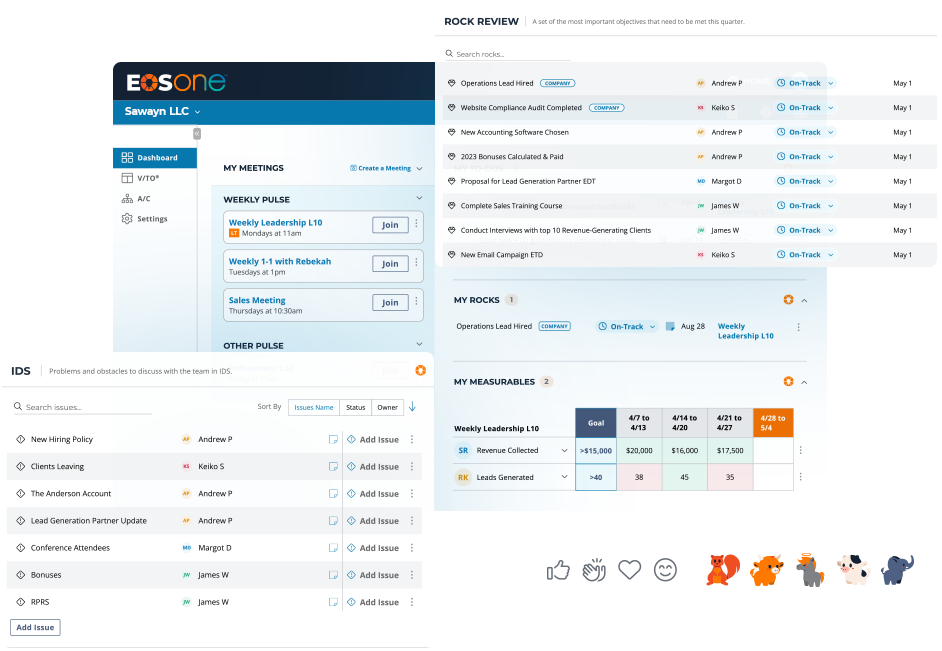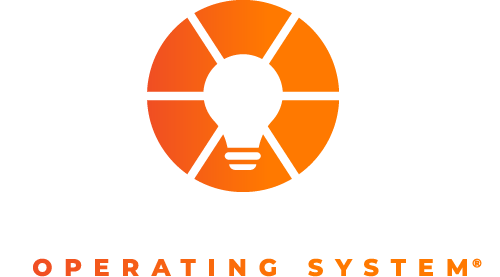According to a recent Gallup study, only 27% of employees strongly believe in their company’s values. Even more telling? Just 23% of U.S. employees strongly agree that they can apply their organization’s values to their work every day.
The gap between having values and living them isn’t just a cultural problem—it’s a business problem.
In my years implementing EOS® with Grand Rapids businesses, I’ve observed something fascinating: Most companies have core values. They’re framed on walls, printed in handbooks, and featured on websites. But when I ask leadership teams how these values influence daily decisions, the room often goes quiet.
The Core Values Crisis
The cost of this disconnect is higher than most leaders realize. When core values exist only as wall art rather than decision-making tools, organizations face:
- Inconsistent hiring decisions
- Misaligned team priorities
- Confused customer experiences
- Diluted culture during growth
- Inefficient decision-making processes
But here’s what’s really interesting: The solution isn’t creating better values—it’s discovering and implementing the real ones.
The True Power of Core Values
Real core values aren’t aspirational statements about who you want to be. They’re observable behaviors that already exist in your best people and strongest moments. When properly identified and implemented, they serve three crucial functions:
- Hiring Filter: They help you identify who will truly fit (and who won’t)
- Decision-Making Framework: They guide consistent choices at every level
- Culture Foundation: They maintain your company’s DNA as you grow
I recently worked with a manufacturing company that struggled with inconsistent quality across shifts. When we dug deeper, we discovered it wasn’t a process problem—it was a values alignment issue. Once they clarified and began truly implementing their core values, quality metrics improved across all shifts, not because they changed their procedures, but because they changed how people made decisions.
The EOS® Approach to Core Values
The EOS® method approaches core values differently than traditional business consulting. Instead of creating aspirational values in a boardroom session, we archeologically discover what’s already working. Here’s how:
Discovery vs. Creation
Think of it like excavation rather than construction. We look for:
- Behaviors of your best people
- Patterns in your biggest successes
- Principles that drive your key decisions
The Three Tests of Real Core Values
For a core value to be real, it must pass three tests:
- Would you fire someone for repeatedly violating this value?
- Would you take a short-term financial hit to maintain this value?
- Can you identify specific, observable behaviors that demonstrate this value?
If you can’t answer “yes” to all three, it’s not really a core value—it’s just a nice idea.
Making Values Practical
Here’s a simple exercise I use with leadership teams to identify their real core values:
- List your best current and past employees. Usually these people spring to mind pretty quickly.
- Write down the specific behaviors that made them great. The list can be as long as you want it to be.
- Look for patterns in these behaviors. What did all of these employees have in common? You will find patterns—in how these employees worked, treated clients, and treated each other.
- Create 3-7 core values based on these behaviors. This will take some time. We have some pointers for how to do this you can find here.
Creating your core values won’t happen overnight. It takes time to develop them, and it takes time to test them (because you might not get it right the first time!) But once you have them, implementing them requires both discipline and tools that can transform them from wall art to a living, breathing document.
Implementation That Works
Once you’ve identified your true core values, EOS® provides practical tools that can help you implement them.
- The People Analyzer™: The People Analyzer is designed to help you take a pulse not just on how your people are performing, but how comfortable they are living out your core values.
- Core Values Speech™: The Core Values Speech is your core values in narrative form. It’s how you as the leader present your core values to your team.
- Regular Level 10 Meetings™: Level 10 Meetings are a great container for reinforcing core values as you discuss client and team headlines and identify, discuss, and solve issues.
Common Pitfalls to Avoid
Through working with numerous companies, I’ve seen several common mistakes in values implementation:
- Making values too complicated to remember. You should only have between 3 and 7 core values. Any more than that and it will be hard for your team to remember all of them. You should also be able to describe them in one concise sentence.
- Failing to provide specific behavioral examples. If you are unclear on your core values, your team will be, too. And if you hire, reward, and fire based on your core values, you should be able to provide examples of core values in practice—or a blatant breach of core values.
- Not using values in daily decisions. Your core values are your north star. They should be part of your everyday business, from weekly L10 Meetings to one-on-ones to solving issues.
- Inconsistent application across departments. If one department is hiring, rewarding, and firing based on core values and another is not, that’s an issue. Consistency is key in truly living out your core values as a team.
Moving Forward
Strong core values aren’t just about culture—they’re about creating a foundation for sustainable business success. When properly discovered and implemented, they:
- Speed up decision-making
- Improve hiring success rates
- Increase team alignment
- Drive consistent performance
The key is moving from having values to living them. This requires:
- Clear, behaviorally-based definitions. If one of your core values is “integrity,” what does that mean? The definition should explain integrity in practice. For example—”at ABC Corp, we are committed to 100% transparent customer service. We don’t hide anything from our clients, not even the ugly truths.”
- Consistent application in decisions. You should hire, promote, evaluate, and fire based on your core values. Your business decisions should also reflect your core values.
- Regular reinforcement at all levels. You aren’t the only one responsible for the reinforcement of your core values. Your core values should be understood by your entire team and remain highly visible to them on your Vision/Traction Organizer.
- Measurable implementation. Your core values should have real results for your company. Maybe it shapes how your employees set Rocks, or how you fill in your accountability chart.
Organizations that successfully implement their core values don’t just perform better—they build the kind of sustainable, scalable success that survives market changes and fuels long-term growth.
The difference between companies that merely survive and those that truly thrive often comes down to this: Are their core values alive in their daily operations, or just alive on their walls?
The EOS® system provides the tools and framework to ensure your values become a living, breathing part of your organization’s success. When your team truly lives your core values, decision-making becomes clearer, alignment becomes natural, and growth becomes more sustainable.


